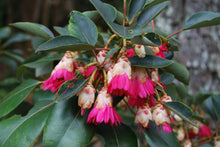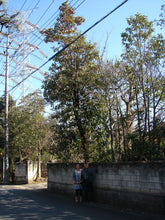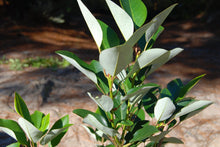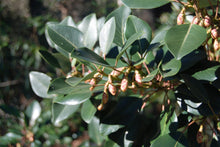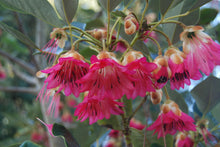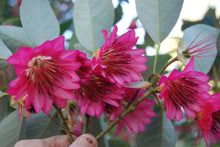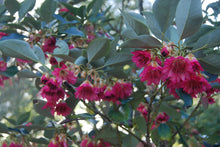Rhodoleia henryi 'Scarlet Bells'
Regular price
$35.00
Sale
Scarlet Bells Henry's Rhodoleia. This has to be one of the most outstanding plants that I have brought back from the eastern Asia. When I purchased this plant in Japan 2003-4, I thought that I was buying Rhodoleia championii, the more familiar species of this genus, which is mostly adapted to milder climates. But Dr. Todd Lasseigne has helped me identify it as R. henryi, which is a much more cold hardy species. Flora of China lists it as being native to as high as 8,500 ft. elevation. Even in southern China this would be quite cold, making this species at least a zone 7 plant. Mt. Mitchell, NC, is the highest point east of the Mississippi River and it is only 6684 ft. in elevation. My two original specimens were left outside in containers for several years with no winter protection and they survived unscathed. The winters of 2009-10 and 2010-11 were our two coldest winters on record here in our area, and this was not injurious to these plants even in containers; whereas, I had lost several R. championii in much milder winters. But we had a number of reports of flower bud damage in zone 7. Notice in the fourth picture how the flower buds zxzzzzzzzzUpon first observation, one would scarcely imagine that this genus is in the Witchhazel family, Hamamelidaceae, which makes it a close relative to our Loropetalum in the South and the Witchhazels in the North. Flowers are a vibrant rose-pink to red and measure about 2-3" across, and in "normal" years, they have started to open in mid March continuing to mid April here in zone 8. But with our last two very mild winters, flowers have begun to open in January and continued to early April, and even with low 20°F nights, the flowers were not damaged. The genus name means "smooth rose" in Latin, with the species epithet of "henryi" referring to Augustine Henry, an Irish physician and plant collector who lived from 1857 to 1930. The foliage is an attractive dark green on the surface with silvery blue undersides with a texture similar to Camellia japonica. It will attain the size of a small to medium size tree. I would speculate that we could expect a size of 12-15' easily in 10 years or sooner. We have had some growth flushes between 4-5 ft. We have had a number of Chinese horticultural students and professors visit us over the past few years, and when they have seen this plant in flower, they have been awed, taking copious pictures. I presently have at least four clones with flower colors ranging from pink to red with varying growth habits from upright to spreading. In the Deep South I would site this plant in morning sun and afternoon shade or filtered sun with good drainage. We haven't experienced any pest problems with it, but unfortunately deer have begun to browse on its foliage.
Zones 7-9








